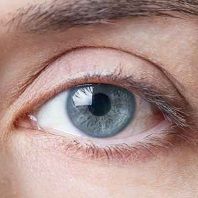Assessing Rates of Noninfectious Vitritis after Intravitreal Injection of Anti-VEGF Agents
Although intravitreal injection of anti-vascular endothelial growth factor (VEGF) agents has become the therapeutic mainstay for diabetic macular edema and neovascular age-related macular degeneration, it poses a risk of noninfectious uveitis or infectious endopthalmitis.

Although intravitreal injection of anti-vascular endothelial growth factor (VEGF) agents has become the therapeutic mainstay for diabetic macular edema and neovascular age-related macular degeneration, it poses a risk of noninfectious uveitis or infectious endopthalmitis. However, whether the cause of uveitis after injection is infectious or noninfectious often cannot be determined.
This difficulty occurs for several reasons. For example, eyes of patients with these inflammatory conditions often look the same and cause the same symptoms whether the cause is infectious or not. In addition, infectious cases may be associated with false-negative culture results, and the need to initiate empirical therapy quickly may prevent the cause from being determined definitively.
Although the etiology of infectious endophthalmitis is well understood, much is still unknown about the pathophysiology of noninfectious uveitis after intravitreal injection of anti-VEGF agents. Clinicians have speculated that noninfectious uveitis may result from an immune reaction to the agent itself or to possible impurities accumulated during its manufacture, storage, or preparation, and that these factors may differ for each anti-VEGF agent.
To describe and compare rates and characteristics of noninfectious vitritis after intravitreal injection of bevacizumab (Avastin/Roche), ranibizumab (Lucentis/Roche), and aflibercept (Eylea/Regeneron), a team of clinical investigators retrospectively analyzed a series of cases of noninfectious vitritis that resulted within 7 days after intravitreal injections of these agents. Injections were given from 2006 to 2013 at Texas Retina Associates, a single, multicenter, retina-only private practice in Dallas, TX. The study was reported in a recent issue of Retina.
Rates of noninfectious vitritis by agent in this case series were as follows:
- Avastin: 0.10% (67 cases in 66,356 injections)
- Lucentis: 0.02% (6 cases in 26,161 injections)
- Eylea: 0.16% (13 cases in 8071 injections)
Differences in these rates were found to be statistically significant at the P < 0.001 level.
The percentage of patients who complained of pain, blurred vision, and floaters did not differ by agent to a statistically significant degree, and neither did mean differences in visual decline. However, the percentage of patients with any visual decline did vary significantly by agent (P < 0.05). Vision loss occurred in 70% (47/67) of Avastin cases, 100% (6/6) of Lucentis cases, and 38% (5/13) of Eylea cases, but visual acuity improved to baseline levels in most cases regardless of the agent used.
Cases occurred after many previous injections as well as after only a few, and average time to onset of symptoms differed little by agent. However, cases associated with Avastin and Eylea injections tended to occur in separate chronological clusters. Three lots of Avastin had 3 or more cases, whereas no lots of Eylea had more than 2 cases. However, 9 of the 13 Eylea cases were linked to a single technician who prepared the medication, which suggests that the cause was related to office handling and preparation instead of a lapse in quality control during manufacturing.